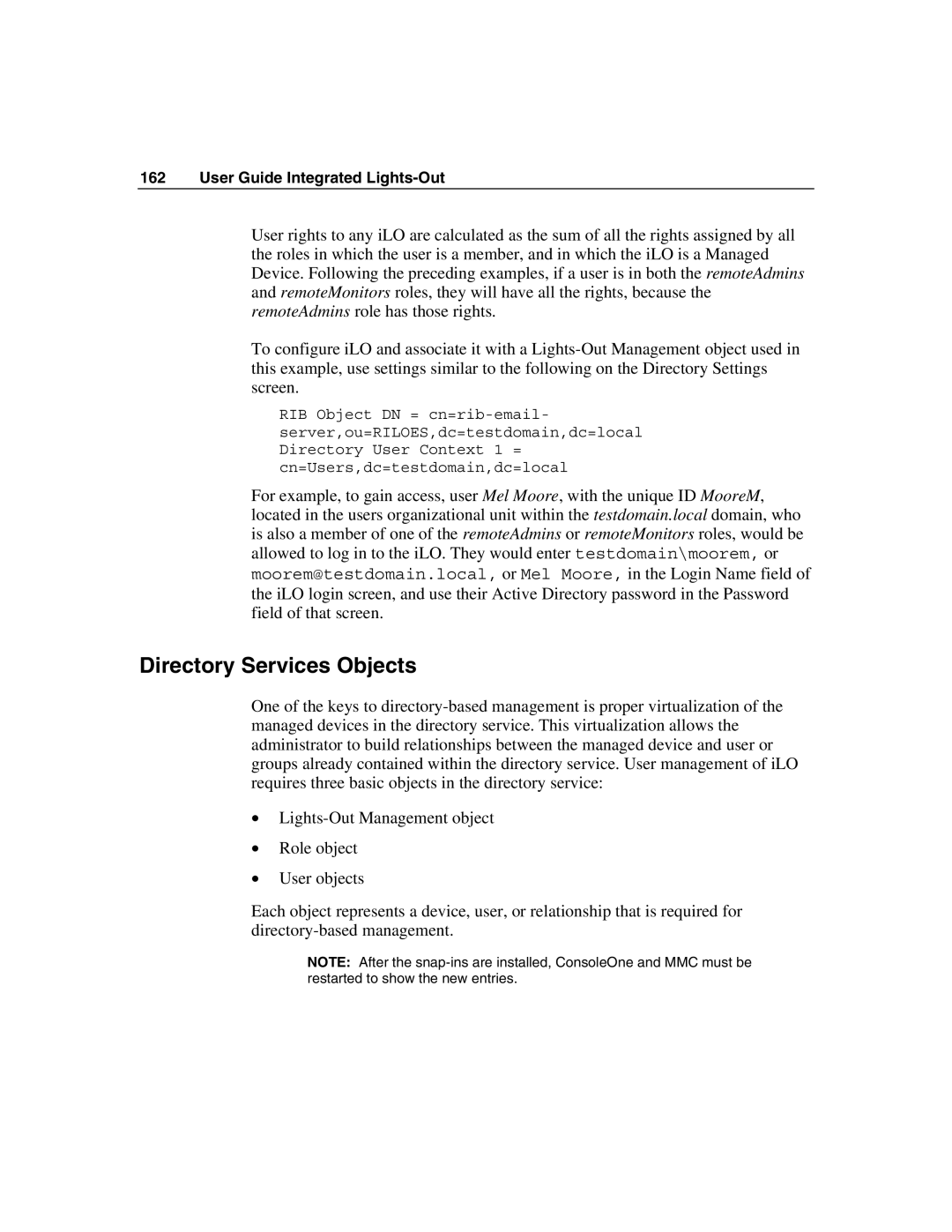162 User Guide Integrated Lights-Out
User rights to any iLO are calculated as the sum of all the rights assigned by all the roles in which the user is a member, and in which the iLO is a Managed Device. Following the preceding examples, if a user is in both the remoteAdmins and remoteMonitors roles, they will have all the rights, because the remoteAdmins role has those rights.
To configure iLO and associate it with a
RIB Object DN =
For example, to gain access, user Mel Moore, with the unique ID MooreM, located in the users organizational unit within the testdomain.local domain, who is also a member of one of the remoteAdmins or remoteMonitors roles, would be allowed to log in to the iLO. They would enter testdomain\moorem, or moorem@testdomain.local, or Mel Moore, in the Login Name field of the iLO login screen, and use their Active Directory password in the Password field of that screen.
Directory Services Objects
One of the keys to
•
•Role object
•User objects
Each object represents a device, user, or relationship that is required for
NOTE: After the
